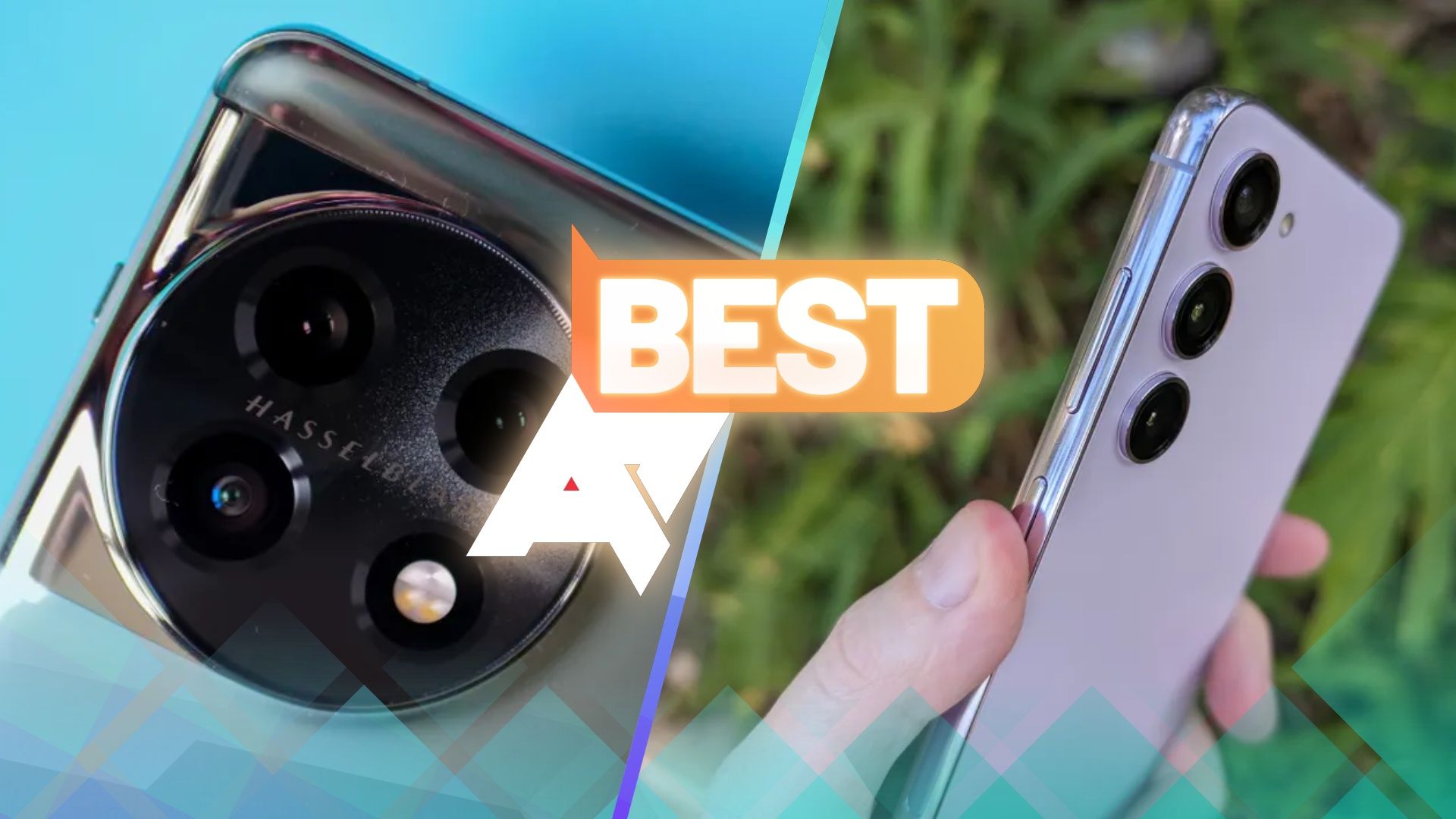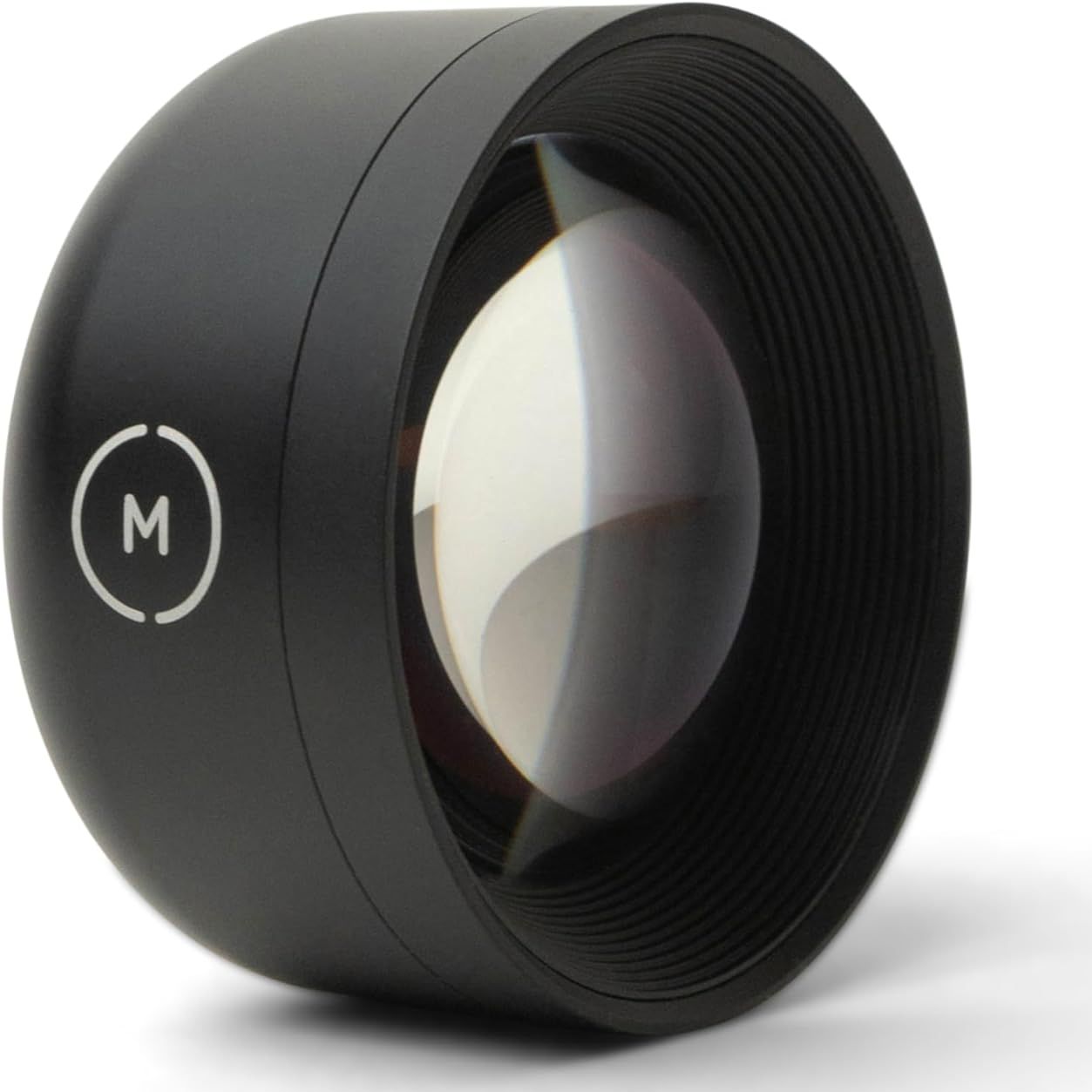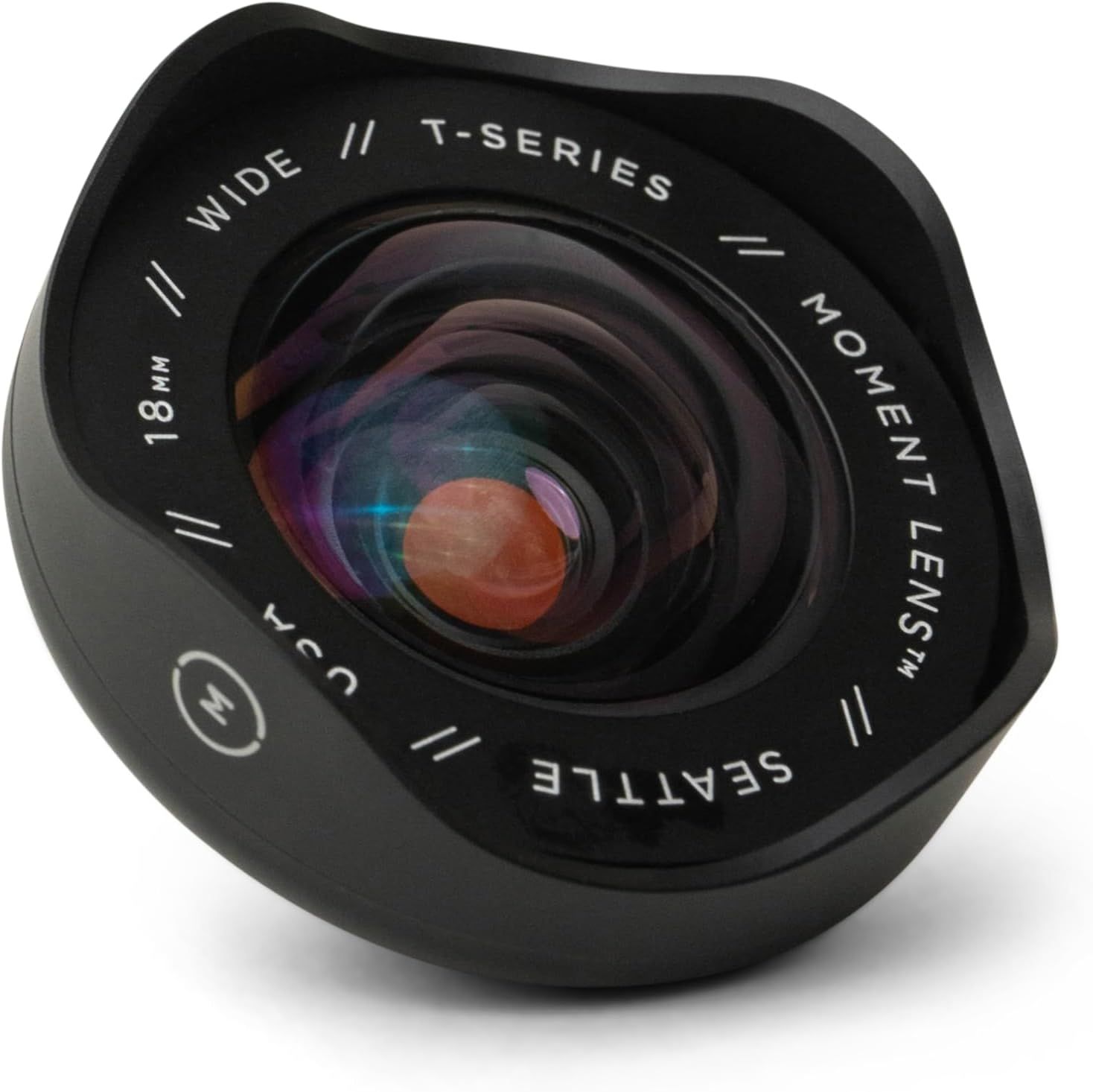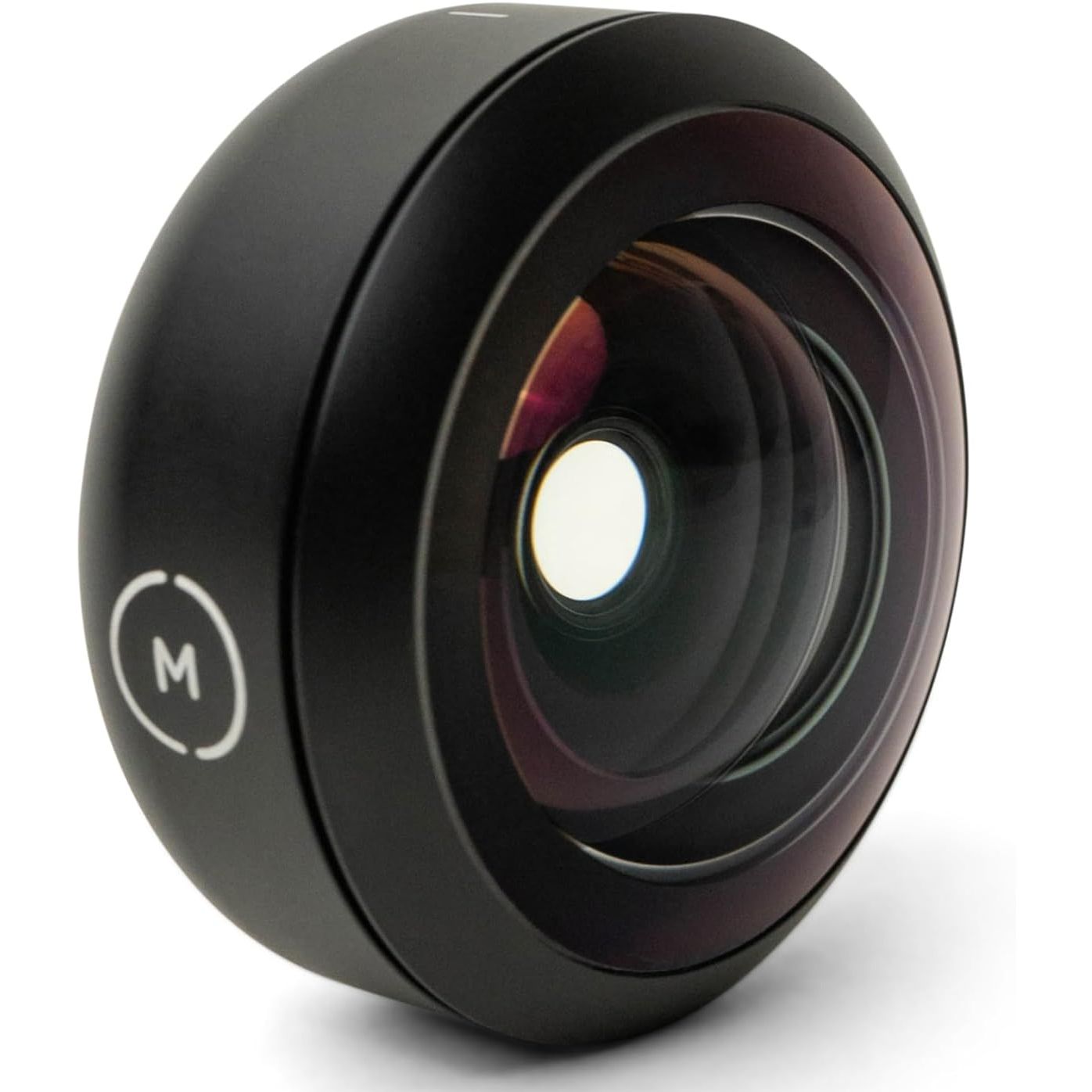It has been about 10 years since Moment launched its first two accessory lenses on Kickstarter, one of the first genuine endeavors to push smartphone photography to new heights. At the time, we were accustomed to using a single camera with a fixed focal length, so it was a game changer to swap lenses for a different perspective.
Since those early days, it has become fairly commonplace to see two, three, or even more cameras on the backs of phones, and they’re all quite good. But despite our best efforts, it’s still hard to escape that smartphone look in our photos. After spending some time with Moment’s latest lenses, now in their third generation, I find they’re great for bringing back some of that creative quality that’s often hard to get otherwise.
Moment provided the T-Series Tele, Wide, and Fisheye lenses for this article. Most sample shots below include descriptions noting which lens was used, but those you may have to tap a button to expand the gallery view to full size for the descriptions to appear.
What’s new in Moment’s T-Series lenses?
A few years after Moment’s original lenses launched, most of the major smartphone OEMs started using larger camera sensors to help with low light performance. Naturally, the built-in lenses grew wider, and Moment compensated by introducing the M-series lenses with a larger mount. In addition to other quality improvements, the company also took the opportunity to introduce several new specialty lenses.
Smartphone cameras have continued growing over the years and eventually outsized the M-series mount. In response, Moment increased the size of the bayonet mount by 20% for the T-Series lenses, so it should work well with camera sensors on all of our current and upcoming flagships.
Size comparisons between M-series (left) and T-series (right) lenses.
To go along with the larger mount, some of the lenses have also grown in size too. To most significant change went to the Tele lens, which is about 10mm wider, 5mm longer, and more than 50% heavier than its predecessor. The Wide lens retained a similar height and weight, but it also gained about 10mm in width. Despite some size increases, these still fit easily into my pockets.
What’s missing in smartphone cameras
It’s no secret that cameras have been the battleground features for smartphones over the last decade. Try to imagine Apple, Google, or Samsung announcing a new model without dedicating a large segment to the latest spec bumps, promises of better dynamic range and color rendition, and the latest software tricks. But for as much as I appreciate these huge leaps in quality, and these photos taken on the Pixel 8 demonstrate just how much is possible, I can’t shake the feeling that they still look like they were taken with a smartphone.
Most people can recognize the bad post-processing that’s responsible for that “smartphone look,” especially with hyper-saturated colors and heavy oversharpening. However, there are other less obvious traits that eventually become noticeable after you’ve seen enough photos, like how everything is shot at the same focal lengths and photos tend to feel oddly flat and lacking in depth — no, background blur from portrait mode doesn’t fix that.

Related
Best camera phones in 2024
Do people even use smartphones for making phone calls anymore?
What I got from the new lenses
Different (and sometimes better) focal lengths
Each phone has its own combination of cameras with different focal lengths, but it’s likely the main camera will be about 24mm equivalent with a high-res sensor, and it’s customary for the second camera to be an ultra-wide at about 12mm equivalent. And of course, “Pro” variants usually include that elusive telephoto camera; but these can be as short as the Galaxy S24 Ultra’s first tele lens at 67mm, or climb all the way out to the Pixel 7 Pro’s 120mm camera.
Each focal length taken with Pixel 8 Pro’s cameras and Moment lenses.
I’m currently using a Pixel 8 Pro for most smartphone shots, and I regularly put all of its cameras to use. However, there’s a significant gap between its 25mm and 112mm cameras, and sometimes that forces me to move either too close or too far from a subject to get good framing. Moment’s Tele lens approximately doubles the focal length of a camera, making the main shooter into a more universally approachable 50mm equivalent.
Likewise, the Wide lens produces a roughly 18mm focal length, fitting in perfectly between those 25mm and 11mm cameras. And it shouldn’t be understated that I’m still using the main camera with these lenses, so the images can be captured at the highest resolution and best low-light performance of any camera on the phone.
More real bokeh
Google and Apple made a lot of news when they introduced portrait modes designed to emulate bokeh, often referred to as background blur. It’s an effect caused by using lenses at wide apertures so that only a subject of a shot is in sharp focus, and everything else in view falls further out of focus as it gets further away. Smartphones have become genuinely good at simulating this effect, but the results still don’t look quite right.
Samples of bokeh, mostly shot with the Moment Tele lens.
While it often feels like smartphones have no natural bokeh, they actually can achieve some when you’re shooting subjects up close and have a lot of separation from the background, but it’s still fairly weak. One of the traits I’ve found with T-Series lenses, particularly the Tele lens, is that they tend to narrow the depth of field to produce more distinctive bokeh.
The pleasant imperfection of lens flares
I’m not nearly as into lens flares as JJ Abrams, but I happen to appreciate the occasional optical anomaly. Love them or hate them, lens flares can happen to any camera under the right conditions, but you may not be seeing as many on high-end smartphones as you used to. Some of this is owed to more careful optical design, but software is regularly responsible for magically removing the light reflections from your images. For example, Google started erasing lens flares at least as far back as the original Pixel, though they were still somewhat notorious in some later models.
Samples of lens flares, shot with a mix of Tele and Wide lenses.
However, if you’re like me and find the flares sometimes add some classic charm to your images, Moment’s lenses pick them up and it seems most phones don’t try to remove them. And of course, the anamorphic lenses are literally designed to enhance flares. I trust JJ would approve.
The art of the lens
I roll my eyes every time I hear hyperbolic statements about smartphones replacing “real” cameras. Will that day come? Maybe, but not for a long time, if ever. There’s always a balance of convenience and simplicity versus the quality and capabilities of the equipment. As a product reviewer, I care too much about getting very sharp and precise photos for my work; and sometimes I want those shots to have creative or artistic qualities. I can do that better with my Sony a7iii than with my Pixel, so I’m not giving up my dedicated camera anytime soon unless it’s for an upgrade.
Sample shots of Moment lenses, taken by Moment lenses.
However, if I’m traveling, out with friends, or even just looking at something cool in the world, I’m happy to capture those memories with my phone. And increasingly, I’m looking to create more through my phone, especially if a full-size camera isn’t an option. When I want more of that artistic control, swapping lenses can have a big impact. Smartphones have enough cameras for the average person, but for those of us that enjoy pushing for more and stretching our tools, these lenses answer the call.
-

Moment T-Series Tele 58mm Lens
The Moment Tele 58mm smartphone lens approximately doubles the focal length of the camera lens it’s mounted on for tighter shots with more natural bokeh.
-

Moment T-Series Wide 18mm Lens
The Moment Wide 18mm smartphone lens gives your primary camera a wider field of view to capture more of the scene in sharp detail.
-

Moment T-Series Fisheye 14mm Lens
The Moment Fishey 14mm smartphone lens produces an extremely wide field of view on your main camera so you can capture huge natural spaces or just get a fun and creative look to your images.
Source link


